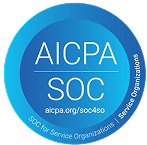FAQs
 What kind of financial aid is available for Indian students in postgraduate programmes?
What kind of financial aid is available for Indian students in postgraduate programmes?
Financial aid for Indian students in master’s or doctoral programmes includes scholarships, grants and assistantships offered by universities, private organisations and government agencies. Many graduate programmes provide teaching or research assistantships, which offer a stipend and tuition waiver in exchange for academic work. Additionally, no-cosigner loans and private education loans can help cover remaining costs when scholarships and assistantships are not enough.
 Can Indian students work while studying in the U.S. or Canada?
Can Indian students work while studying in the U.S. or Canada?
Yes, Indian students can work while studying, but there are restrictions. In the U.S., students on an F-1 visa can typically work on campus for up to 20 hours per week during the semester. In Canada, international students with a valid study permit can work both on campus and off campus, usually for up to 24 hours per week.
 What’s the difference between in-state and out-of-state tuition in the U.S. and does it apply to Indian students?
What’s the difference between in-state and out-of-state tuition in the U.S. and does it apply to Indian students?
In-state tuition is a discounted rate for students who are residents of the state where the university is located. Out-of-state tuition is significantly higher and applies to students from other states and international students. Indian students typically pay out-of-state tuition unless they qualify for special programmes or scholarships.
 Can Indian students get financial aid from the U.S. or Canadian governments?
Can Indian students get financial aid from the U.S. or Canadian governments?
Generally, Indian students are not eligible for federal financial aid in the U.S. or Canada. However, some provinces in Canada may offer financial aid programmes for international students and certain U.S. states or universities provide institutional aid.
 What’s the typical repayment period for no-cosigner loans?
What’s the typical repayment period for no-cosigner loans?
Repayment terms for no-cosigner loans vary by lender, but they typically range from five to 15 years. Some lenders also offer grace periods after graduation before repayment begins, but this does increase the cost of the loan over time because interest continues to accrue during a grace period.
